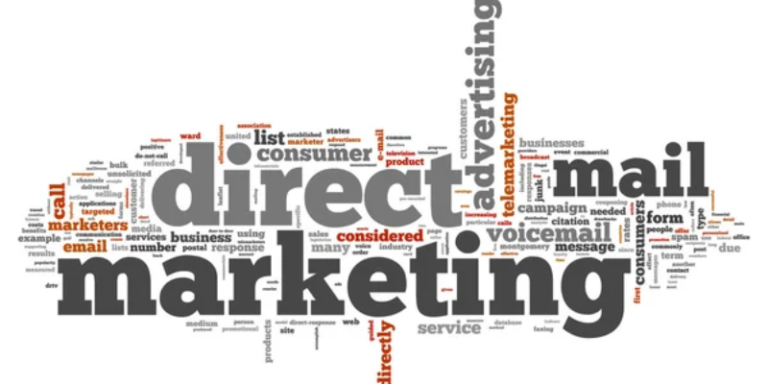Direct marketing is a strategy designed to reach potential customers directly, bypassing traditional intermediaries such as retailers or media channels. By directly communicating with customers, businesses can personalise their marketing efforts, measure results more effectively, and build stronger relationships with their audience. Direct marketing is an essential component of modern marketing strategies, enabling businesses to target specific segments with tailored messages. This article explores various direct marketing techniques, their applications, and the benefits they offer to businesses.
Email Marketing
Email marketing is one of the most widely used forms of direct marketing. It involves sending promotional emails or newsletters to a targeted list of recipients. The effectiveness of email marketing lies in its ability to deliver personalised content to specific customer segments. According to Kotler and Armstrong (2018), email marketing allows businesses to maintain regular communication with their customers, providing updates on new products, special offers, and company news. This method is particularly effective because it can be automated, allowing businesses to reach large audiences with minimal effort. Moreover, email marketing is highly measurable, providing insights into open rates, click-through rates, and conversion rates, which are critical for assessing the success of a campaign (Chaffey, 2015).
Direct Mail
Direct mail involves sending physical promotional materials, such as postcards, brochures, or catalogues, via postal mail to specific addresses. Despite the rise of digital marketing, direct mail remains a potent tool, particularly for reaching older demographics or customers in regions with limited internet access. Direct mail is tangible, allowing recipients to physically interact with the promotional material, which can enhance recall and engagement. As noted by Stone and Jacobs (2008), the tactile nature of direct mail can create a lasting impression, making it a valuable component of a multi-channel marketing strategy.
Telemarketing
Telemarketing involves making outbound phone calls to potential customers to promote products or services, gather information, or conduct surveys. This method allows for immediate two-way communication, enabling businesses to address customer concerns and questions in real-time. According to Blythe (2013), telemarketing is particularly effective for business-to-business (B2B) marketing, where direct, personalised communication can lead to higher conversion rates. However, it is essential to approach telemarketing with sensitivity to avoid being perceived as intrusive, particularly in regions with strict telemarketing regulations.
SMS Marketing
SMS marketing involves sending promotional messages directly to customers’ mobile phones via text messaging. With the high open rates of text messages, SMS marketing offers a powerful way to reach customers quickly and efficiently. Chaffey and Ellis-Chadwick (2016) highlight that SMS marketing is particularly effective for time-sensitive promotions, such as flash sales or event reminders. However, businesses must ensure they have the recipient’s consent to avoid legal issues and maintain customer trust.
Social Media Direct Messaging
Social media direct messaging is a modern direct marketing technique that involves engaging with potential customers through platforms like Facebook, Instagram, or LinkedIn. This method allows for personalised, one-on-one communication, making it ideal for building relationships with customers. According to Tuten and Solomon (2017), direct messaging on social media can be used to offer personalised customer service, address complaints, and promote products in a more casual and conversational manner.
Personal Selling and Door-to-Door Sales
Personal selling and door-to-door sales involve face-to-face interactions with potential customers. These methods are highly personalised, allowing businesses to address specific customer needs and objections directly. As stated by Jobber and Ellis-Chadwick (2016), personal selling is particularly effective for high-value or complex products that require detailed explanations. Although door-to-door sales have declined in popularity, they remain effective in certain industries, such as home improvement and security systems.
Point-of-Sale Marketing and Coupon Distribution
Point-of-sale marketing promotes additional products or services at the point of purchase, such as offering upgrades or complementary items. This method is particularly effective in retail environments, where customers are already in a buying mindset. Coupon distribution, whether through mail, email, or in-store, encourages repeat purchases by offering discounts or incentives. According to Baines and Fill (2014), these methods can significantly increase sales by encouraging impulse buys and customer loyalty.
Event Marketing
Event marketing involves hosting or sponsoring events to engage directly with potential customers. This method allows businesses to create memorable experiences that build brand awareness and customer loyalty. Events can range from product launches to community activities, providing opportunities for direct interaction with the brand. Kotler and Keller (2016) note that event marketing is particularly effective for creating emotional connections with customers, which can lead to long-term brand loyalty.
Direct marketing offers a range of strategies that allow businesses to communicate with their customers directly, offering personalised and measurable marketing efforts. Whether through traditional methods like direct mail and telemarketing or modern techniques like social media direct messaging and event marketing, direct marketing remains a vital tool for businesses seeking to build strong relationships with their customers and achieve their marketing goals.
References
Baines, P., & Fill, C. (2014) Marketing. Oxford University Press.
Blythe, J. (2013) Principles and Practice of Marketing. SAGE Publications.
Chaffey, D. (2015) Digital Marketing: Strategy, Implementation and Practice. Pearson Education.
Chaffey, D., & Ellis-Chadwick, F. (2016) Digital Marketing. Pearson Education.
Jobber, D., & Ellis-Chadwick, F. (2016) Principles and Practice of Marketing. McGraw-Hill Education.
Kotler, P., & Armstrong, G. (2018) Principles of Marketing. Pearson Education.
Kotler, P., & Keller, K. L. (2016) Marketing Management. Pearson Education.
Stone, M., & Jacobs, R. (2008) Successful Direct Marketing Methods. McGraw-Hill Education.
Tuten, T. L., & Solomon, M. R. (2017) Social Media Marketing. SAGE Publications.













